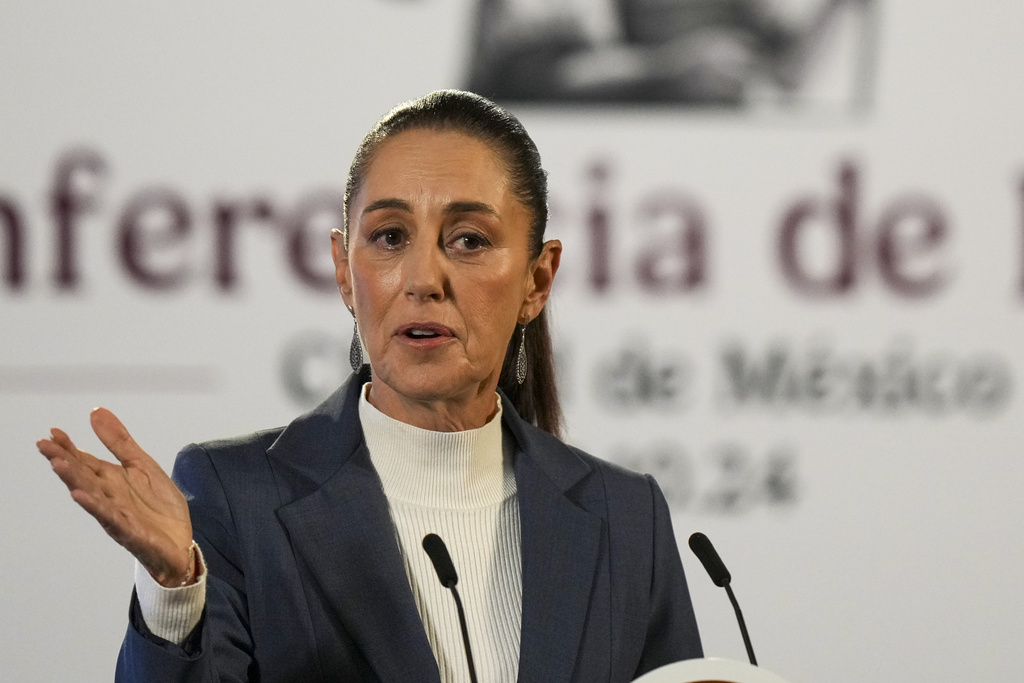Mexico Faces Fiscal Challenges as Moody’s Issues Downgrade \ Newslooks \ Washington DC \ Mary Sidiqi \ Evening Edition \ Moody’s has downgraded Mexico’s debt outlook to “negative,” citing fiscal challenges and risks to judicial independence from recent legislative changes. President Claudia Sheinbaum criticized the agency for bias against her administration’s policies. While Mexico’s economic growth benefits from nearshoring, concerns over government spending, judicial reforms, and U.S. trade policies weigh on its fiscal outlook.
Mexico’s Debt Outlook Downgraded: Quick Looks
- Moody’s Downgrade: Debt outlook changed from “stable” to “negative.”
- Key Concerns: Rising deficits, Pemex liabilities, and judicial reforms.
- Sheinbaum’s Criticism: Claims Moody’s ratings reflect outdated economic biases.
- Fiscal Challenges: Federal deficit projected at 6% of GDP in 2024.
- Future Risks: U.S. trade policies, judicial elections, and slow GDP growth.
Deep Look
Reasons Behind the Downgrade
Moody’s cited multiple factors for its decision to revise Mexico’s debt outlook:
- Fiscal Challenges:
- Federal budget deficits have widened to approximately 6% of GDP in 2024, the highest in recent years.
- Increased government spending on large-scale projects and social programs has strained public finances.
- Mexico’s state-owned oil company, Pemex, remains a significant liability, requiring substantial government support.
- Judicial Reforms:
- Recently enacted laws aim to overhaul Mexico’s judiciary, requiring all federal judges to stand for election in 2025 and 2026.
- Critics, including the U.S. government and business groups, argue that these changes could erode judicial independence and expose the courts to political pressure or cartel influence.
- Nearshoring Gains and Risks:
- Mexico continues to benefit from nearshoring investments as companies move production closer to the U.S. market.
- However, uncertainty surrounding the revision of the United States-Mexico-Canada Agreement (USMCA) in 2026 poses risks, particularly if U.S. trade policies shift unfavorably.
Sheinbaum Responds to Moody’s
“Many times these ratings agencies are aimed at issuing evaluations starting from an economic model,” Sheinbaum said. “Starting in 2018, the economic model in our country changed. Many times these ratings have this bias of origin.”
Under AMLO, the government significantly increased spending on social programs, large infrastructure projects, and Pemex, leading to persistent budget deficits. Sheinbaum has continued these policies while pledging not to introduce new taxes but instead boost tax collection from existing sources.
Fiscal Challenges Ahead
Key fiscal challenges include:
- Unfinished infrastructure projects, such as AMLO’s flagship oil refinery and railways.
- Expanded social benefit programs for the elderly.
- Pemex’s mounting debt obligations.
Mexico’s federal debt is projected to reach 51.4% of GDP by the end of 2025, excluding significant off-budget liabilities like pension obligations and Pemex’s debts. Analysts also questioned Mexico’s optimistic GDP growth forecast of 2-3% in 2025, especially after the economy grew only 1.5% in the third quarter of 2024.
Judicial Reforms Raise Economic Concerns
“The constitutional overhaul risks eroding checks and balances of the country’s judiciary system, with potential negative impact to Mexico’s economic and fiscal strength,” Moody’s wrote.
U.S. officials and business groups have also voiced concerns, suggesting judicial elections could expose the courts to political influence or cartel interference. Critics fear that allowing judges to campaign for office might enable criminal organizations to fund candidates and sway judicial outcomes.
Nearshoring: A Bright Spot with Risks
While Mexico has benefited from nearshoring as companies relocate production closer to the U.S., Moody’s warned of potential headwinds:
- The upcoming 2026 USMCA review could bring changes to rules of origin, labor specifications, and trade policies.
- Any unfavorable modifications could reduce Mexico’s export competitiveness and slow investment inflows.
Economic and Currency Impacts
The uncertainty surrounding Mexico’s fiscal path and judicial reforms has weighed on its currency. The Mexican peso recently fell to approximately 20.40 to the U.S. dollar, reflecting investor caution.
Moody’s emphasized that a slower economic growth rate would undermine government revenue and make fiscal consolidation even more challenging.
Outlook for Mexico’s Economy
Without structural reforms or increased revenue streams, Mexico’s fiscal and economic trajectory may remain under pressure.
Mexico Faces Mexico Faces







